Foods that start with K are a diverse category in the culinary world. These foods encompass a range of items, from common and easily accessible to rare and exotic.
They include various types such as fruits, vegetables, seafood, grains, and popular dishes worldwide. The flavors of these foods stretch from sweet and delicate to sour and spicy, reflecting the culinary diversity of their origins.
From kiwi in New Zealand to Korean kimchi, these K-starting foods are not confined to any one region; they are found across various countries and continents.
Along with a list of common foods that start with K, I also explore dishes, fruits, and vegetables beginning with K.
Below, you’ll find the most popular foods that start with K and listed in order of popularity.
Check out 45 foods starting with K, organized by how well-known they are.
45 Foods that Start with K with Filters
Check out 45 foods starting with K, organized by how well-known they are. You can also use the filter to sort them into different categories, like dishes, meats, seafood, fruits, vegetables, or condiments, to find what you’re looking for more easily.
Kebab
- Dishes
Kebab, also known as kabob, kabab, or kebap, is a culinary dish consisting primarily of roasted or grilled meat. Originating from the Middle East, it has gained popularity worldwide, especially in Iranian and Turkish cuisines.
Kebabs, cooked on skewers over an open flame, feature a variety of meats such as lamb, beef, chicken, or fish.
However, there are also other methods of preparation, such as baking in an oven or cooking as a stew.
The dish has evolved into numerous variations, including the skewered shish kebab and the doner kebab served with bread.
Ketchup
- Condiments
Ketchup is a popular condiment often used to enhance the flavor of various foods. It’s primarily made from tomatoes, sweetened with sugar or corn syrup, and mixed with vinegar and various spices.
This sauce is commonly associated with fast food items like burgers, fries, and hot dogs, and is known for its sweet, tangy, and slightly spicy taste.
Kimchi
- Dishes
Kimchi is a traditional side dish in Korea. You can make kimchi with various vegetables such as radishes, cucumbers, green onions, and more, but the most common kimchi is made from cabbage (like napa cabbage).
Once the vegetables are mixed with ginger, salt, chili peppers, garlic, and Jeotga (salted seafood), they undergo a fermentation process. The kimchi’s flavor differs from other pickle dishes, which are spicy and salty.
To enjoy it, you can wrap boiled pork with a half leaf of fresh kimchi or prepare long-fermented kimchi for kimchi jjigae; you surely fall in love with this dish.
King Crab Legs
- Seafood
King crab legs are the limbs of a large species of crab found in cold seas, prized for their meat.
They are often steamed, boiled, baked, and served as a delicacy in various cuisines. The meat is known for its rich, sweet flavor and tender texture, making it a sought-after seafood item.
To retain the full flavor, it’s recommended to cook the crab legs with their shells intact.
Kiwi
- Fruits
Kiwi is a small, oval fruit with a fuzzy brown exterior and bright green or golden flesh inside, dotted with tiny black seeds.
Kiwi comes in two primary varieties: green and yellow, both featuring soft, hair-covered brown skins.
It’s known for its sweet and tangy flavor and soft, juicy texture. Kiwis are often eaten raw, added to fruit salads, or used as a garnish for desserts and drinks.
The fruit, strongly associated with New Zealand and sharing its name with an iconic bird, actually has Chinese origins. That’s why it is sometimes called Chinese gooseberry.
Kale
- Vegetables
Kale, also known as leaf cabbage, is a type of leafy green vegetable with either green or purple leaves, which are rich in nutrients. Unlike cabbage, its leaves do not form a head.
Kale comes in various colors like red, lavender, blue, violet, and white. Furthermore, kale can even serve ornamental purposes.
Kale can be eaten raw in salads, cooked in soups and stews, or baked as crispy snacks. It’s known for its slightly bitter and earthy taste.
Kale is available in two main types: Brassica oleracea, with smoother leaves, and Brassica napus, characterized by ruffled and curly leaves.
Kung Pao Chicken
- Dishes
Kung Pao chicken, also known as Gong Bao or Kung Po, is a delicious stir-fried dish from China’s Sichuan province.
The dish combines cubed chicken, soy sauce, dried red chilies, and Chinese-based ingredients, such as Sichuan peppercorns, black vinegar, and rice wine.
For that, the dish offers a delightful blend of sweet, sour, and mildly spicy flavors, mainly coming from the pepper.
Just remember, it’s not the same as General Tso’s chicken, which is deep-fried instead of a stir-fried delicacy like Kung Pao chicken.
Kit Kat
- Candy/confectionery
Kit Kat, produced by Nestle, is a beloved chocolate-covered wafer bar. This beloved chocolate-covered wafer bar has a wide array of flavors.
Their flavors range from fruity to green tea, and even soy sauce or crème brûlée with some flavors having limited availability. Plus, there’s a vegan, dairy-free option too!
Made from 100% sustainable cocoa, Kit Kat is considered a good luck charm in Japan. Thanks to the phonetic similarity between “kitto katsu” and “surely to win,” Japanese students often snack on Kit Kats before exams for a boost of confidence.
Kielbasa
- Meat
Kielbasa sausage is a Polish term for any kind of sausage made from a variety of meats like beef, pork, lamb, turkey, veal, or chicken.
People often season it with garlic, marjoram, cloves, and other spices, giving it a unique garlicky taste.
Shaped like a horseshoe, kielbasa is not only delicious but visually appealing too. Try serving the sausage with mustard and sauerkraut, or pair it with polenta, potato salad, mac and cheese, or grilled veggies for a delicious meal!
Kumquat
- Fruits
Kumquat is a fruit belonging to the citrus family that originated in Southern China. The shape is relatively small and has an orange color.
You can eat all parts of this fruit, from peel to flesh, or remove the peel to make dishes. The peel is slightly bitter, and the flesh quite tangy, creating a balanced flavor when eaten together.
Kumquats are popular in East Asia and Southeast Asia, and are also known as cumquats in Australia. Unlike oranges, they’re small, like olives or grapes.
They can be enjoyed raw with a slightly sweet and quite sour flavor, but cooking or using them in jams and chutneys can reduce acidity. Like other citruses, kumquat contains several seeds that you should get rid of when eating as they are bitter.
Kasha
- Dishes
Kasha is a traditional dish from Eastern Europe, particularly popular in countries like Russia, Poland, and Ukraine.
It’s a versatile meal that can be made from various types of grains such as buckwheat, barley, oats, millet, or rye.
These grains are typically boiled in water or milk to create a porridge-like consistency. Kasha can be served as a savory dish, often accompanied by onions or gravy, or as a sweet dish, especially for breakfast.
It’s known for its comforting and hearty qualities and has been a staple in Slavic diets for centuries.
Kohlrabi
- Vegetables
Kohlrabi, also known as the German turnip, is a vegetable that’s part of the cabbage family. It’s a cultivar of the same species as cabbage, broccoli, cauliflower, kale, and Brussels sprouts.
This biennial plant is appreciated for its stout, bulbous stem, which can be eaten either raw or cooked.
The taste of kohlrabi is somewhat sweet and mild, resembling the flavor and texture of a broccoli stem or cabbage heart, but it’s more tender and sweeter.
The plant is notable for its round shape and can be found in several varieties, including both purple and green types.
While it’s most commonly used in salads and slaws, the leaves of the plant are also edible. Kohlrabi has been cultivated for its enlarged stem, which forms a nearly spherical shape.
Kidney Beans
- Vegetables
Kidney bean is a kind of Phaseolus Vulgaris – common bean. They are named according to the colors and the shape of the beans.
Their red color and shape look like human kidneys, which is why many people call it that. These beans can be classified according to their color changes from red, to light red, to white.
Kidney beans’ flavor is slightly sweet and soft after cooking. They appear in various cooking dishes such as chili con carne, Creole, and more.
Kabocha
- Fruits
- Vegetables
Kabocha squash has another name which is Japanese pumpkin. It is favored by many chefs thanks to its natural sweetness, soft and smooth texture after being cooked.
FYI, in Japanese, “kabocha” refers to Western pumpkins. Kabocha squash is a winter favorite with hard, dark green, knobbly skin and bright orange flesh.
The skin is edible as well and often appears in tempura recipes. Normally, kabocha’s flavor is a delightful fusion of sweet potatoes and pumpkins.
You can process various dishes with kabocha squash, such as baked, fried, steamed or mashed and pureed dishes. In Japan, you can see kabocha squash when eating hot pots.
Kingfish
- Seafood
Kingfish (or king mackerel) live in the natural cold and clean water, and many people have become fans of this fish after enjoying it.
You can make various dishes from this fish, but I recommend trying to taste sashimi. You will find it soft, naturally sweet, and with a dedicated tender texture you cannot find in other sashimi.
However, you should note that the taste and texture of kingfish may vary depending on the specific type of it and how it is prepared.
Kaffir Lime
- Fruits
The Kaffir lime, scientifically known as Citrus hystrix, is a type of citrus fruit that originates from tropical Southeast Asia.
When ripe, it turns from green to yellow. The Kaffir lime tree is a thorny bush that can grow between 2 to 11 meters tall. Its leaves are unique and easily recognizable due to their hourglass shape, consisting of a leaf blade and a flattened, leaf-like stalk.
In cooking, particularly in Thai, Cambodian, Indonesian, Laotian, and Vietnamese cuisines, the leaves of the Kaffir lime are more frequently used than the fruit itself. These leaves can be used fresh, dried, or frozen and are a key ingredient in many traditional dishes.
Key Lime
- Fruits
Key lime refers to a small, round citrus fruit, known for its intense, tart flavor. It’s smaller and more aromatic than the more common Persian lime, and its juice is a distinctive pale yellow.
Key lime is famously used as the key ingredient in Key lime pie, a popular American dessert, especially in the Florida Keys, where the fruit is commonly grown.
The pie combines the tangy lime juice with egg yolks and sweetened condensed milk, creating a rich, creamy filling often served in a graham cracker crust.
Kedgeree
- Dishes
Kedgeree is a dish that blends elements from both Indian and British cuisine. It typically consists of cooked flaked fish (usually smoked haddock), rice, parsley, eggs, curry powder, butter or cream, and spices.
The dish is a colonial-era recipe, adapted by the British from the Indian dish khichdi.
Kedgeree can be enjoyed either hot or cold and is often considered a breakfast dish in the UK, though it can be served at any meal.
Kouign-Amann
- Dishes
Kouign-Amann is a rich, buttery pastry from Brittany, France. It’s made with laminated dough, similar to puff pastry, but with fewer layers.
The dough is layered with butter and sugar, then baked slowly until it caramelizes, creating a sweet, flaky, and slightly crunchy texture.
The name kouign-Amann combines the Breton words for ‘cake’ (kouign) and ‘butter’ (amann).
This pastry is known for its indulgent buttery taste and has gained popularity in various parts of the world, including Japan and the United States.
Knishes
- Dishes
Knish is a snack food of Ashkenazi Jewish origin, popular in Central and Eastern Europe. It’s a savory, baked, or fried dough pastry filled with ingredients like mashed potatoes, onions, ground meat, kasha (buckwheat groats), or cheese.
Knishes are often sold by street vendors in areas with a significant Jewish population and are commonly found in New York City.
They can be round, square, or rectangular and vary in size. The dough can either completely encase the filling or leave part of it exposed.
Kipper
- Seafood
Kipper is a small, oily fish, typically a herring, that has been split open, gutted, salted or pickled, and then cold-smoked. This process gives the fish a strong, distinctive flavor.
Kippers are traditionally eaten for breakfast in the United Kingdom, Ireland, and some parts of North America. They can be served in various ways, including grilled or boiled.
Knockwurst
- Meat
Knockwurst, also known as knackwurst, is a type of German sausage made from ground pork and veal, along with fresh garlic.
These sausages are known for their plumpness and are often seasoned and smoked. They are typically enjoyed in a variety of dishes, including sandwiches, and are a common feature in German cuisine.
Kare Kare
- Dishes
Kare Kare is a traditional Filipino stew known for its thick, savory peanut sauce. The main ingredients usually include oxtail, beef, or sometimes seafood or vegetables.
The stew is flavored with ground roasted peanuts or peanut butter, and colored with annatto. It’s often served with a side of shrimp paste and is a staple at Filipino feasts.
Kamote Cue
- Dishes
Kamote cue is a popular Filipino snack made from sweet potatoes. The sweet potatoes are sliced, coated in brown sugar, and then deep-fried until the sugar caramelizes.
This snack is commonly sold as street food in the Philippines and is typically skewered on bamboo sticks for easy handling. In a modern twist, kamote cue is served in brown paper bags, similar to French fries.
Kuli-Kuli
- Dishes
Kuli-Kuli is a crunchy snack from West Africa, particularly popular in Nigeria and Ghana. It’s made primarily from ground peanuts.
The peanuts are roasted, ground into a paste, and then mixed with spices and salt. This mixture is then formed into various shapes and deep-fried until crisp.
Kuli-Kuli is often enjoyed on its own or paired with dishes like garri (cassava flakes) and soups.
Koshary
- Dishes
Koshary, koshari, or kushari. is the beloved national dish of Egypt with roots tracing back to Indians traveling with British soldiers to Egypt in the early 1900s.
It is also a common sight on street food stalls. In general, koshary is a flavorful combination of fried rice, lentils, chickpeas, pasta, and spices.
This spicy, garlicky, and savory dish can be perfectly paired with vinegar, spicy tomato sauce, and fried onions.
Kitfo
- Dishes
Kitfo is a traditional dish from Ethiopia made of raw minced lean beef with various spices (called mitmita in Ethiopian).
It includes red pepper powder, salt, and mustard seed. The topping is seasoned butter with korerima, koseret, and aiwan seed.
You can taste the exclusive flavor of raw beef with condiments without the fishy smells of beef. For a flavorful meal, eat this food with injera or serve it with mild cheeses, leafy greens, and ensete leaves.
Kiwano
- Fruits
Kiwano, also known as horn melons, spiked melon, or horned cucumber, is a tropical fruit native to Africa.
Kiwano is cultivated mainly in Sahara, Africa, and it starts to flower in spring and turns ripe in summer.
When it is ripe, it has a dark orange color. When unripe, they’re quite hard, but ripe ones turn orange and are easy to slice.
While the rind and seeds are edible, the real prize is the green, jelly-like pulp surrounding each seed, boasting a sweet cucumber-melon flavor.
Kedjenou
- Dishes
Kedjenou is a spicy, slow-cooked stew from Côte d’Ivoire. It’s typically made with chicken or guinea hen and a variety of vegetables.
The unique aspect of kedjenou is its cooking method; it’s traditionally prepared in a sealed pot over fire or coals, which allows the meat to cook in its own juices and intensifies the flavors of the ingredients.
It’s commonly served with Attiéké, a side dish made from grated cassava.
Kenkey
- Dishes
Kenkey is a traditional West African dish, which is a type of dumpling made primarily from fermented corn. It’s a staple food in Ghana and is known for its slightly sour taste.
The preparation involves steeping corn grains in water, milling them, and then fermenting the dough for several days. It’s often served with a spicy sauce, fried fish, or stew.
Kalamay
- Dishes
Kalamay is a sweet and sticky dessert from the Philippines, made from coconut milk, brown sugar, and ground glutinous rice.
It’s often flavored with margarine, peanut butter, or vanilla. This delicacy is commonly used as a sweetener in various Filipino desserts and beverages.
Kalamay is known for its thick, viscous texture and is typically served at room temperature or cooled. It’s a popular treat during festivities and is also a common pasalubong, or homecoming gift.
Kabosu
- Fruits
Kabosu is a citrus fruit from Japan, Kabosu is similar to yuzu and is often used as a substitute for vinegar in Japanese cuisine. The fruit is typically harvested while still green, although it turns yellow when ripe.
Kabosu juice is known for its tartness and unique fragrance, making it a popular addition to dishes like sashimi, grilled fish, and various hot pot dishes.
It’s also used in a variety of products, including condiments, beverages, and desserts.
Kokonte
- Dishes
Kokonte (or konkonte, abeti3, and lapiiwa) is a traditional Ghanaian dish made primarily from dried and pounded cassava root.
It’s known for its distinctive brown color and is commonly served with soups made from palm nuts or groundnuts.
This dish is strongly associated with poorer households due to its low cost in Ghana. Despite its humble reputation, this dish is a hot and satisfying meal for many families.
Kelewele
- Dishes
Kelewele is a popular snack from Ghana made by frying plantain pieces that have been seasoned with spices.
It’s known for its spicy flavor and is often enjoyed in the evenings or as a side dish. The plantains used are typically ripe, giving the dish a sweet and spicy taste.
Also known as hot plantain crisps, this street food delight is easy to find in Accra, Ghana’s capital city, and comes in large chunks or cubes.
Kachumbari
- Dishes
Kachumbari is a kind of salad that originates from East Africa. It’s a must-try dish when visiting Kenya, Tanzania, Rwanda, Nigeria, and other nations in the African Great Lakes region.
This salad is made from fresh veggies such as chili peppers, tomatoes, avocado, onions, and dressed with cilantro and a little lime juice.
The vegetables are fresh and crunchy, mixed with a pretty acerbity and aromatic sauce that makes you wake up and cool on hot days.
Additionally, it pairs wonderfully with pilau, ugali, BBQ meat, and sausages.
Koeksisters
- Dishes
Koeksisters are sweet pastries made of fried dough infused with syrup or honey originating from South Africa.
They are known for their golden, crunchy crust and syrupy center. The dough is usually braided before frying, and the pastries are very sticky and sweet, often tasting like honey.
The name comes from the Dutch word “koek,” which refers to wheat flour confectionery. The sauce you use to infuse them is not chocolate but honey or syrup.
There’s also a variant called “koesister,” which swaps the syrup for desiccated coconut.
In 1995, Nelson Mandela shared Koeksisters with the widow of an apartheid president as a symbol of reconciliation in South Africa.
Koki
- Dishes
Koki is one of the common types of flatbread in Sindhi (a province of Pakistan), with the prominent ingredients being wheat and gram flour.
However, its flavor is not the same as any flatbread you eat, as you need to add chopped chilis, spices, and herbs when making it.
After getting the dough, you have to roast it until there is a slight burn on the rim of the bread.
This bread has a crispy as well as spicy flavor that makes it perfect when pairing with stir-fries, pickles, gravy dishes, or vegetables. Otherwise, eating koki alone is still delicious.
Kakadu Plums
- Fruits
Kakadu plums are native to Australia, known by various names like salty plum, billygoat plum, and green plum.
They hold the title for having the highest vitamin C content of any fruit, making them a popular food and traditional medicine among Aboriginal Australians.
These fleshy, egg-shaped fruits offer a mix of sour and occasionally salty flavors. Though you can eat them raw, they’re even better when transformed into delicious sauces and relishes.
Koshihikari Rice
- Grains
Koshihikari rice is a variety of short-grain Japonica rice, highly prized for its quality and flavor.
Originating in Japan, koshihikari rice is known for its sweet and nutty taste and its ability to maintain an ideal texture when cooked – sticky yet firm.
It’s a popular choice for sushi and other Japanese dishes. The rice grains are short and translucent, becoming sticky when cooked, which makes them perfect for being picked up with chopsticks.
Kwai Muk
- Fruits
Kwai muk, or Artocarpus hypargyreus (scientific name), is an evergreen tree with cold-hardy characteristics native to China.
This slow-growing beauty can double as a decorative tree in your garden. This fruit has a round shape with light orange, and you will find its acerbity when you taste it.
You can process it by drying it or eating it raw if you want. As a cousin to breadfruit and jackfruit, kwai muk bears fuzzy, orange-brown fruits with a deeply sweet taste and a hint of tanginess.
Kuchela
- Condiments
Kuchela is a tasty hot relish from Trinidadian cuisine. Its base consists of grated and strained unripe mangoes.
Commonly, kuchela gets its distinctive taste from amchar masala, a spice blend featuring cumin, cilantro seeds, fenugreek seeds, peppers, fennel seeds, and brown mustard seeds.
This relish is a spicy, salty, and sour mix, further seasoned with garlic, vinegar, or oil. Kuchela makes a fantastic side dish, accompanying pelau, a rice dish, or various curries.
Kecap Manis
- Condiments
Kecap manis is a sweetened type of soy sauce originating from Indonesia. It has a thicker consistency and a darker color compared to regular soy sauce, and it’s characterized by a rich, molasses-like flavor due to the addition of palm sugar or jaggery.
Kecap manis is a staple in Indonesian cooking and is used in a variety of dishes to add a sweet and umami flavor. It’s commonly used in dishes like nasi goreng, satay, and as a marinade for grilled meats.
Ketembilla
- Fruits
Ketembilla, also known as Ceylon gooseberry, is a fruit from a plant native to Sri Lanka and southern India.
The fruit is typically dark purple, juicy, and has an acidic flavor. It’s often not eaten fresh due to its acidity but is popularly used in jams. Some people peel the skin to reduce the acidity and make it more palatable.
Kurrat
- Vegetables
Kurrat is a type of leek, specifically a cultivar of Allium ampeloprasum, the broadleaf wild leek.
It’s used as a vegetable and is similar to the common leek but has its own distinct characteristics.
Although its roots can be traced back to the Middle East, it’s now grown and enjoyed in various countries worldwide, including parts of Asia, Europe, and America.
Kurrat is valued for its bundle of leaf sheaths, which are used in cooking for their mild, onion-like flavor.
Kenponashi
- Fruits
Kenponashi is the fruit of the Japanese raisin tree (Hovenia dulcis). It is a cold-hardy tree and is beautiful for landscaping.
The so-called “fruits” are actually edible flower stems with a raisin-like taste, perfect for eating raw, cooking, or even using as a garnish in desserts.
This versatile plant is popular for its medicinal properties, such as alleviating hangovers, acting as a laxative, and treating fevers. Plus, you’ll find kenponashi in many dishes in Chinese and Korean cuisine, too.
Next up, embark on a culinary journey through the alphabet as you can delve into the delectable world of dishes that begin with the letter K.
Dishes That Start with K
Let’s delve into famous dishes that begin with the letter K:
This is just a condensed list of the most famous dishes. For a more comprehensive overview, consider exploring the full guide of K-starting dishes.
Next, let’s discover the sweet and savory role of fruits that also begin with ‘K’ in these delightful dishes.
Fruits That Start with K
This segment focuses on fruits that start with the letter “K,” highlighting their distinctive tastes and culinary uses:
This selection represents just a glimpse of the diverse range of fruits starting with the letter K. There are many other other K-initial fruits that will amaze you.
After delving into fruits that start with K, why don’t you shift your focus to vegetables sharing the same initial?
Vegetables That Start with K
Below are some well-known vegetables that start with K:
If you’re interested in learning more about these vegetables and similar food delights, read this detailed list of the vegetables that begin with K.
Don’t just read about it – experience the rich tastes of foods that start with K. From kiwi to kohlrabi, your taste buds are in for a treat!
If you enjoyed this journey as much as I did, I encourage you to leave a comment on this article. Make sure to share the post with people around so they can learn more about food starting with K. Let’s spread the word and inspire others to expand their culinary horizons too!
Also, you can see a list of foods that start with all the letters in the alphabelt. It contains many great options that will considerably enrich your meals.

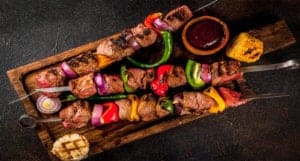
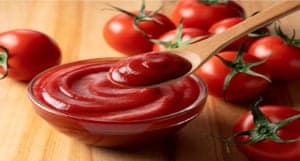
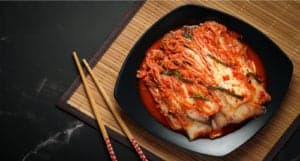
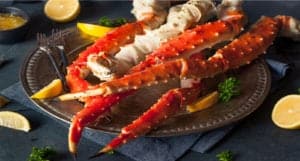
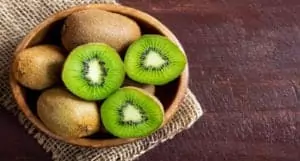
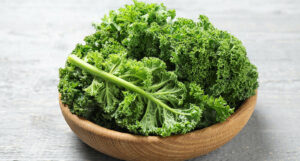
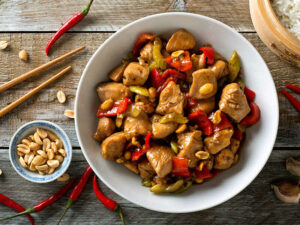

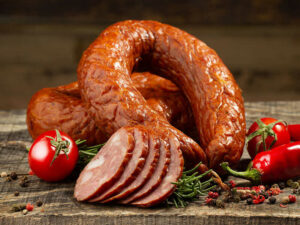
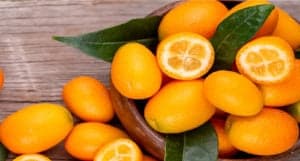
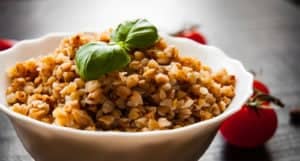
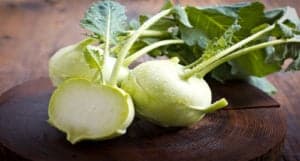
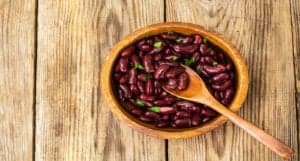
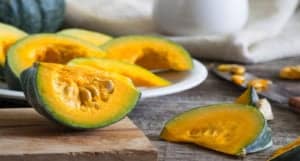
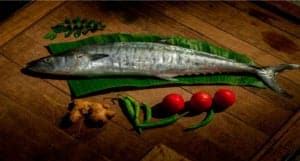
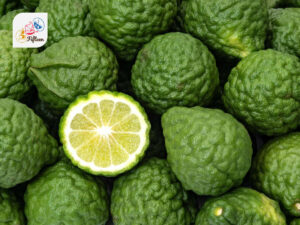
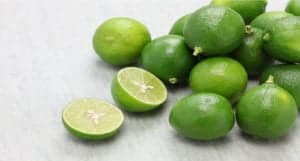
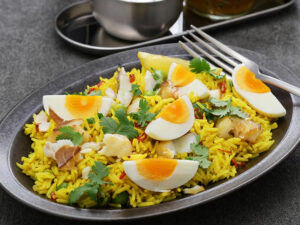




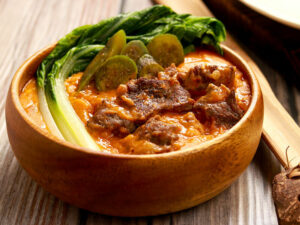
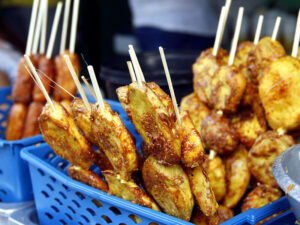

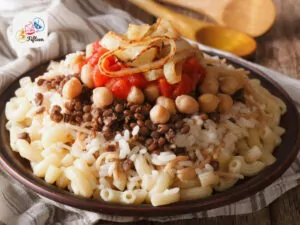
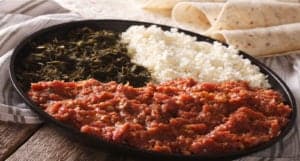
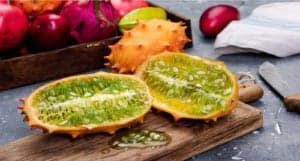
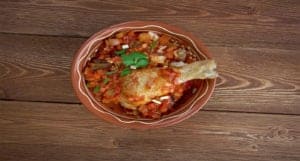
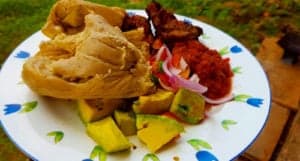
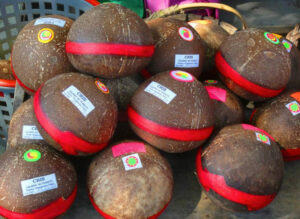
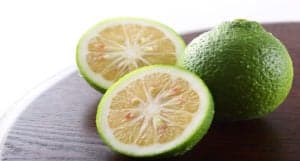
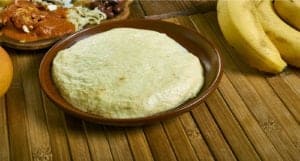
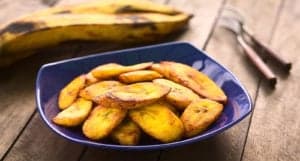
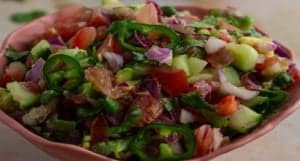

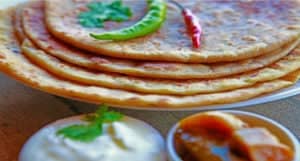
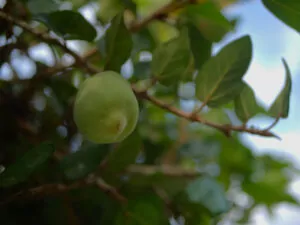
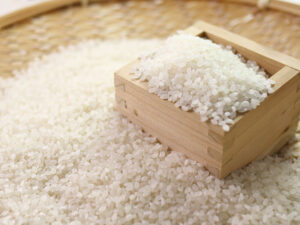
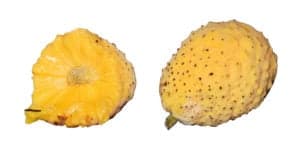
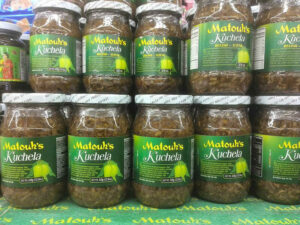
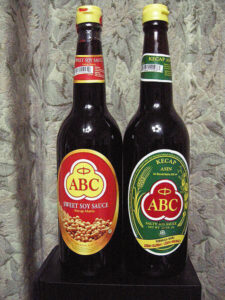
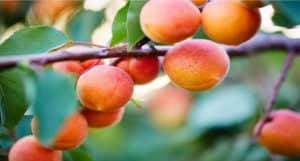
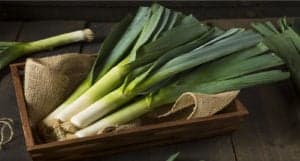
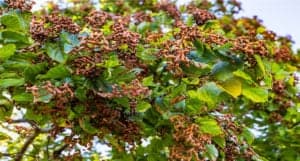


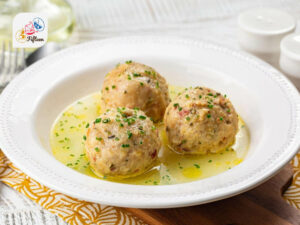
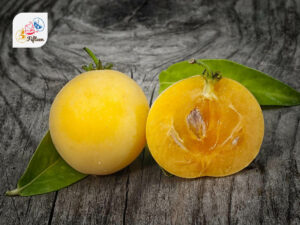
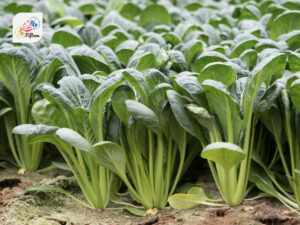
Jamie Scott
Editor in Chief, Senior Content Writer
Expertise
Home Cooking, Meal Planning, Recipe Development, Baking and Pastry, Food Editor, Cooking-video Maker, Western Food Evaluation Expert
Education
Le Cordon Bleu College of Culinary Arts
Local Community College, New York, NY
Jamie Scott is a skilled culinary expert and content creator specializing in Western cuisine. With over 15 years in the culinary field and formal training from Le Cordon Bleu, Paris, Jamie deeply understands how to blend nutrition with delicious flavors. His passion for cooking matches his commitment to making healthy eating accessible and enjoyable.
On Fifteen.net, Jamie brings a fresh perspective to classic dishes and beverages, offering readers insightful recipes, cooking tips, and a fresh view on meal planning that emphasizes taste, health, and simplicity.